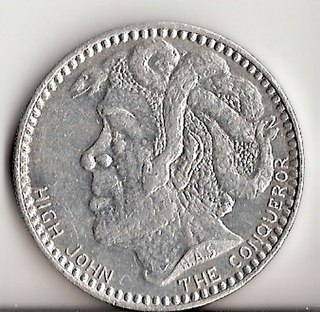Parade
Krewe of Muses parade on Jeudi Gras, the Thursday night prior to Mardi Gras. The parade starts at Magazine Street and Jefferson street in Uptown New Orleans; proceeds east to Napoleon street where it follows Knights of Babylon and Knights of Chaos.
Parade themes
Krewe of Muses season parade theme is secret until Jeudi Gras. The theme is always satirical.
In 2006, to honor the victims of Hurricane Katrina, the Muses had at the tail end of their parade an empty float which evoked the riderless horse that follows the caisson carrying the casket in a funeral procession. [2]
- 2023 Goodnight Muse
- 2022 Let It Ride 21 or Bust
- 2021 - no parade due to Covid 19 pandemic
- 2020 Visions: NostradaMuse Sees All
- 2019 Muses the Musical
- 2018 A Night at the Museum
- 2017 Dr. Meuss on the Loose, Oh The Parade We'll Throw!
- 2016 Muses Sweet Sixteen
- 2015 Are You There God? It's Us, Muses!
- 2014 Muses Ready To Wear You Out
- 2013 Muses Makin' Groceries
- 2012 Muses Go Shopping, Taking it to the Limit
- 2011 Dancing with the Muses
- 2010 The Muses Guide to Love and Romance
- 2009 Muses 009: License to Swill
- 2008 Muses Night Fever
- 2007 The Adventures of Supermuse
- 2006 Muses Got Game
- 2005 Muse TV, We'll Turn You On
- 2004 The Weekly World Muse, Enquiring Muses Want to Know
- 2003 Museology—the Lesser Known Gods and Goddesses
- 2002 Muses Reach the Terrible Twos
- 2001 Muses First Time
Honorary Muses
Krewe of Muses select one woman to be Honorary Muse each parade season. Each year's Honorary Muse rides in the krewe's main float, a large fiber optic high heeled shoe. [3]
- 2023 Irma Thomas
- 2022 Swin Cash
- 2020 Jennifer Coolidge
- 2019 Patricia Clarkson [4]
- 2018 LaToya Cantrell
- 2017 Tamron Hall
- 2016 Solange Knowles
- 2015 Sue Zemanick
- 2014 Julia Reed
- 2013 Ruby Bridges
- 2012 Patricia Clarkson
- 2011 Liz McCartney
- 2010 Mary Matalin
- 2009 Kimberly Rivers Roberts
- 2008 Marva Wright
- 2007 Brenda Marie Osbey
- 2006 Becky Zaheri
- 2005 Charmaine Neville
- 2004 Becky Allen
- 2003 Maria Giacobbe
- 2002 Cherice Harrison-Nelson
Iconic floats

- The Goddessey is the first float in the parade and carries the krewe captain and officers. Muses krewe member Susan Gisleson designed “The Goddessey.” Built by Kerns Studios, it features Greek mythology's winged stallion, Pegasus; symbols for the nine muses in Greek mythology; and more than 100 peach-colored lanterns hanging from the Tree of Knowledge.
- High Heel Shoe carries the Honorary Muse of the Parade
- Mama Duck and Duckies
- The Sirens is the final float in the parade.
Throws
Since its inception, Muses has emphasized usable and reMUSEable throws. From soap to earbuds, socks to water bottles, luggage tags to pens and notebooks, bandanas to scarves, Muses is a leader in throws that are functional and exciting for the crowds. Muses throws are cherished, worn, and displayed throughout the year, rather than being discarded to clog drains or landfills.
Of course, the iconic and upcycled Muses Decorated Shoe, which was originally an homage to the Zulu coconut, is a perfect example of reuse. It is also the most coveted throw of Mardi Gras.
Many of the Muses tote bags, pencil bags, and cosmetic bags are made from recycled materials.
In recent years, to reduce its impact, Muses has made a conscious decision to scale down the amount of single-use plastic — the focus of throws is quality. Out of this year's throws, very few are traditional beads, some of which have the logoed medallion affixed with a lobster claw so that they can easily be removed and hooked to a backpack, purse or belt loop and the bead can be recycled.
Muses strives to be a leader in promoting a more sustainable Mardi Gras through reMUSEable throws.










